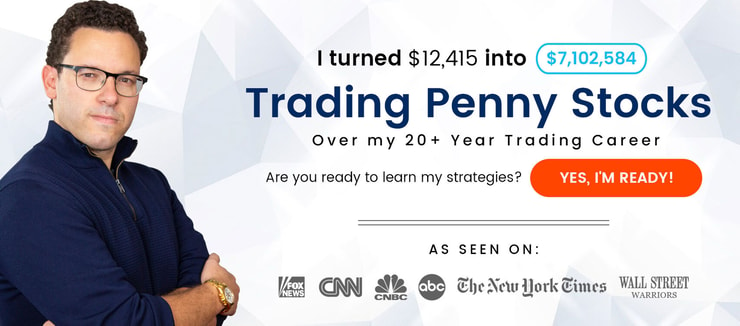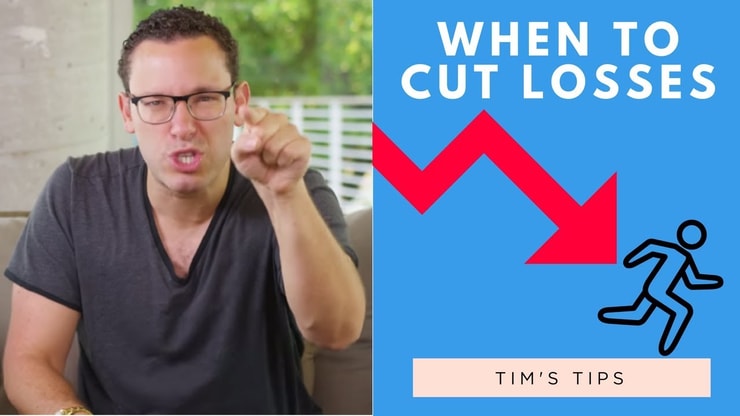Why is day trading so hot right now? I shared my thoughts on a recent episode of “The Investing For Beginners Podcast”…
If you ask me, there’s never been a better time to start trading penny stocks … But there’s a catch.
The recent GameStop Corp. (NYSE: GME)/Reddit/Robinhood hijinks brought a ton of attention to the stock market. That’s on top of the surge of new traders who started trading in 2020.
The problem? Now people think that they can just open an account, start throwing money at stocks, and get rich quick.
This ‘money mindset’ usually leads to failure.
But there’s a lot of potential right now for traders who take the time to understand how the penny stock game works. Hint: they’re not like ‘real’ stocks like Amazon (NASDAQ: AMZN) or Google (NASDAQ: GOOG)…
Traders who are willing to build their ‘knowledge accounts’ before focusing on money are far more likely to make smart trading decisions.
In “The Investing For Beginners Podcast,” I go much deeper into the how and why of my strategy and what I teach my students. I want to share some of the most important lessons from the episode. But first…
Table of Contents
- 1 About “The Investing For Beginners Podcast”
- 1.1 “The Investing For Beginners Podcast” Lesson 1: Cut Losses Quickly!
- 1.2 “The Investing For Beginners Podcast” Lesson 2: Trading Isn’t For Everyone
- 1.3 “The Investing For Beginners Podcast” Lesson 3: Don’t Get Cocky
- 1.4 “The Investing For Beginners Podcast” Lesson 4: Learn From Your Losses
- 1.5 “The Investing For Beginners Podcast” Lesson 5: No Guarantees
- 2 Why I’m a Teacher First, Trader Second
About “The Investing For Beginners Podcast”
The “Investing For Beginners Podcast” is hosted by Andrew Sather and Dave Ahern.
It’s not just about day trading — they cover all sorts of topics related to finance and investing. In their words, their goal is “to decode industry jargon, silence crippling confusion, and help you overcome emotions — by looking at the numbers.”
Knowledge is power. So check it out and learn something!
Now, let’s get to the top lessons we discussed in the show…
“The Investing For Beginners Podcast” Lesson 1: Cut Losses Quickly!
If you’re a Trading Challenge student or follow me on Twitter, you already know my #1 rule … CUT LOSSES QUICKLY!
But if you’re not sure why this is my #1 rule, be sure to listen closely to the podcast and take notes.
No trader is right all of the time. I post my trades and stats publicly, so you can see that I lose a lot — sometimes as much as 25% of the time.
But here’s the thing…
As of February 2021, my average gain is about $1,700.* Typically, my losses are just a few hundred dollars each.
If my gains are bigger than my losses, and I win more often than I lose, I’m on the right track.*
The reason why the majority of traders lose overall is that they don’t cut losses quickly. They don’t want to take a loss. It’s not fun. It’s not good for their egos.
So instead, when they have a loss on that when whatever stock they’re in or whatever investment they’re in, they get stubborn. They hold and hope. Sometimes they even double up or triple up. They say, ‘I have to be right.’
Sometimes the stock does come back, and they’re rewarded for their bad behavior. But trust me, this bad behavior catches up with traders eventually…
(*Please note: My results are far from typical. Individual results will vary. Most traders lose money. I have the benefit of years of hard work, dedication, and experience. Trading is inherently risky. Do your due diligence and never risk more than you can afford to lose.)
“The Investing For Beginners Podcast” Lesson 2: Trading Isn’t For Everyone
This might be shocking coming from me … I don’t think everyone should pursue day trading.
In the podcast, I explain why I don’t think anyone should risk their hard-earned money unless they’re fully prepared.
I teach so that I can be part of helping traders be prepared. Honestly, there’s no excuse for being unprepared.
I have thousands of video lessons … Many are available for no cost on YouTube. I have several in-depth trading DVDs too.
One of my students, Jamil, even condensed all of my lessons into an incredible book: “The Complete Penny Stock Course.” I love that I have students who are more organized than me because now anyone can access these teachings all in one place.
The majority of traders fail, some say it’s around 90%. With those odds, most people who think they’ll become millionaires are wrong.
I’ve made millions of dollars, but it’s taken many years.* I’m literally working 12, 14, 16 hours a day.
Trading isn’t for everyone. My Trading Challenge isn’t for everyone. But for traders who are willing to put in the work and be disciplined even without guarantees, it’s an incredible educational resource.
More Breaking News
- Recursion Pharmaceuticals Faces Financial Headwinds Amid Strategic Changes
- DNN Stock Climbs: What’s Driving the Change?
- PTC: Tech Titan’s Unexpected Surge?
“The Investing For Beginners Podcast” Lesson 3: Don’t Get Cocky
Some people think I’m overcautious and cut losses too quickly. Maybe I am … In the podcast, I talk about why.
I was fortunate enough to start trading during a hot market. But it wasn’t a good environment to really learn risk management. That led to some serious losses further down the line…
The cockier you are, the more likely it is that you’ll be humbled by the market. That can mean having to learn a very expensive lesson.
During a hot market like we’ve seen recently, it’s easy to start thinking you can do no wrong.
I see a lot of newbies getting into really bad habits now … like overtrading. Not cutting losses quickly. Following alerts and not doing their own research.
But I anticipate that when the market shifts — and it inevitably will — many newbies will lose very quickly because they’re not prepared.
If you want to be in the penny stock game for the long haul, it’s SO important to stay humble and develop good habits.
Kyle Williams is a great example of a trader who stays humble. He just passed $1 million in profits* … But he’s not getting cocky.
He started in the Trading Challenge and continues to learn and adapt every day. Now he even helps out in my Trading Challenge as a chat room moderator among other things … Check out this post all about his latest milestone.
(*Please note: Kyle’s results are far from typical. Individual results will vary. Most traders lose money. Top traders like Kyle have the benefit of years of hard work, dedication, and experience. Trading is inherently risky. Do your due diligence and never risk more than you can afford to lose. I’ve also hired Kyle Williams to help in my education business.)
“The Investing For Beginners Podcast” Lesson 4: Learn From Your Losses
When I first started trading, I thought I could do no wrong.
But when I did make a mistake, it was a big one … In “The Investing for Beginners Podcast,” I talk about my $500K loss.
It’s a long and winding story — I talk about it in-depth in the podcast, and you can read about it in my autobiography “An American Hedge Fund.”
But to put it briefly — I believed in a tech company and invested in it, then everything blew up.
In the long run, I was actually right about the technology. But being right isn’t what matters in the stock market. Even if you’re ‘right,’ the company could still go bankrupt and wipe you out.
I’ll be honest, this loss destroyed me for a while. I was drunk for literally like two or three years afterward. I thought my life was over.
But ultimately, I was able to learn from it. That loss is what took me back to my strategy of taking singles instead of going for home runs. This strategy has helped me earn $428K+ in trading profits* so far in 2021, as of February 15.
You can’t have a complete education without failure.
I teach my students through my trades — both the wins and losses. Actually, people watch my video lessons about losses three times more than the video lessons about my wins. Here’s an example:
I love that because I’m not afraid of losses, I’ve gotten better at controlling them. Being a teacher actually makes me more disciplined. I don’t want to look like an idiot in front of all my students.
“The Investing For Beginners Podcast” Lesson 5: No Guarantees
Practice, practice, practice. That’s mostly what trading is all about.
It’s endless practicing. But what I really want my students to understand is that practice does not make perfect — but it increases your skills. And that’s really all you can do.
For instance, when Jack Kellogg started in my Trading Challenge, he studied for as much as 10 hours every day.
He didn’t know if or when it would ever pay off for him.
Jack didn’t anticipate riches when he was studying all those hours. It wasn’t just money that motivated him — it was refining his process and becoming self-sufficient.
His story is incredibly inspiring — but I need to emphasize that his results are far from typical. As of February 3, 2021, he’s over $3 million in trading profits.* He now helps out with my Trading Challenge, too.
(*Please note: Jack’s results are far from typical. Individual results will vary. Most traders lose money. Top traders like Jack have the benefit of years of hard work, dedication, and experience. Trading is inherently risky. Do your due diligence and never risk more than you can afford to lose. I’ve also hired Jack Kellogg to help in my education business.)
Don’t just be impressed by top traders’ profits — be impressed by their work ethic.
I want my students to be obsessed with the stock market. That’s why I do nightly study checks … I want to inspire them to keep going!
Why I’m a Teacher First, Trader Second
I wanted to try to put myself out of business by sharing everything. I want my students to become smarter and better traders than me. That’s why I started teaching. That’s why I’m so open when I’m interviewed on shows like “The Investing For Beginners Podcast.”
I can’t guarantee any sort of success in the stock market or that anyone will make any money. That part’s all up to the student and what he or she is willing to do.
But I can teach them everything I’ve learned over the years.
I’m willing to put everything I’ve got into teaching. Interested? If so, consider applying for my Trading Challenge.
What was your favorite lesson learned from “The Investing For Beginners Podcast”? Leave a comment, I love hearing from you!














Leave a reply